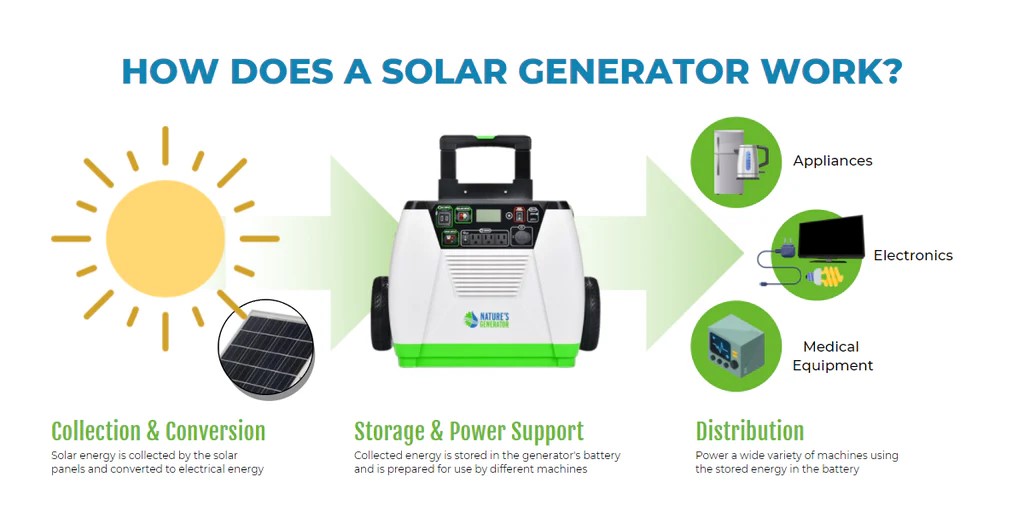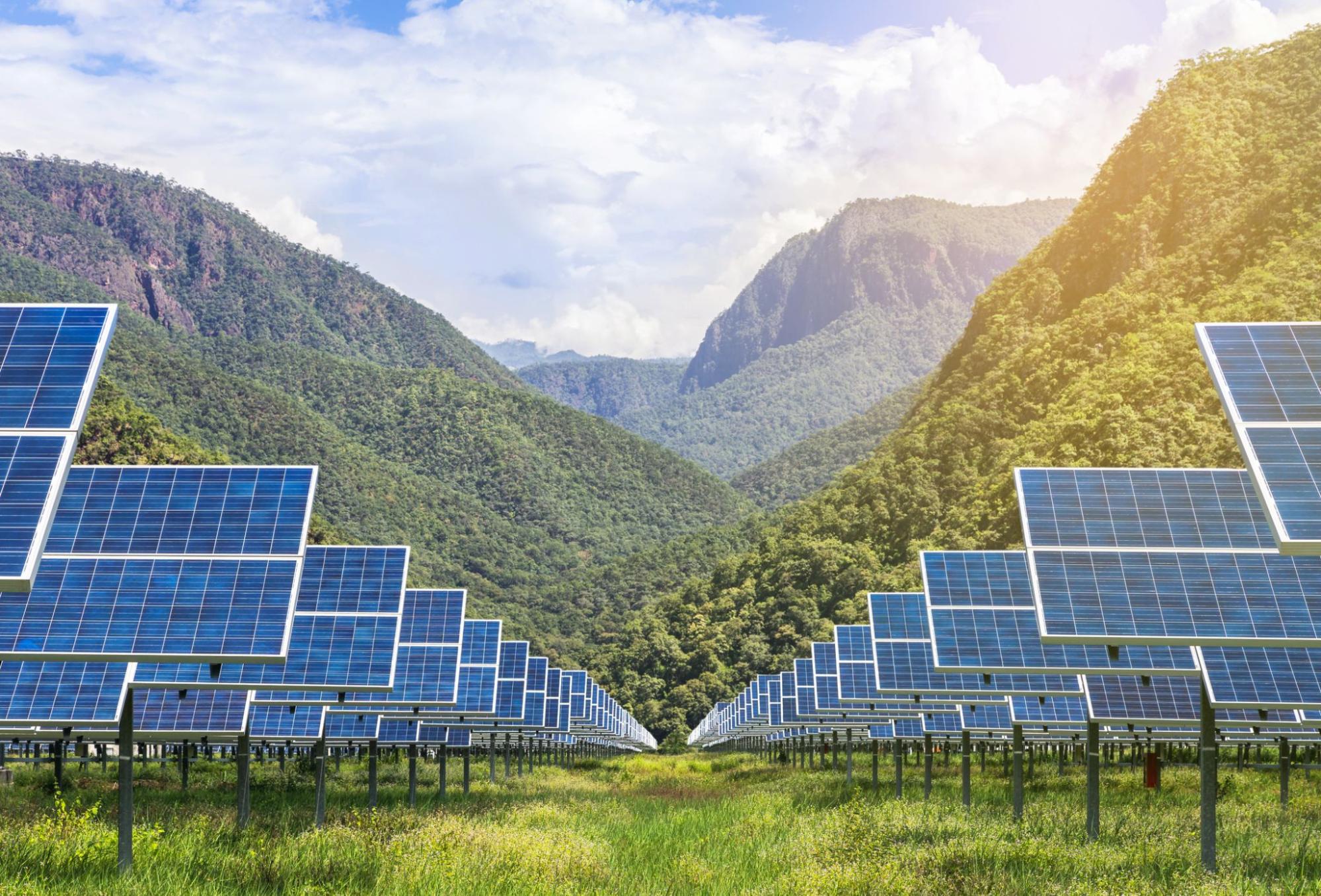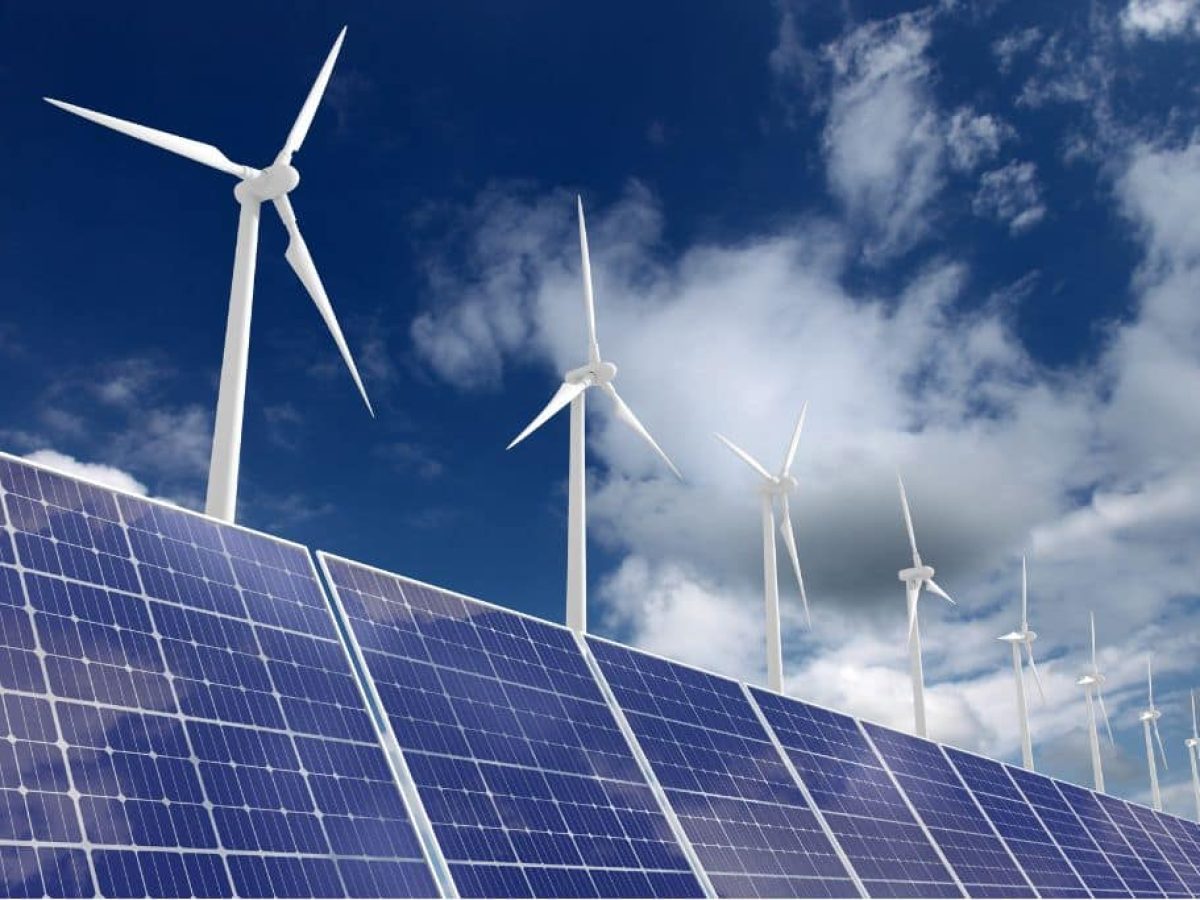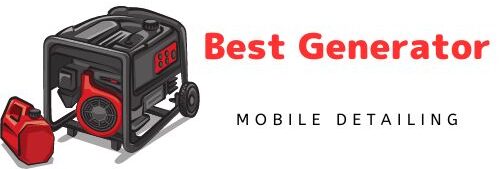Imagine you’re deep in the mountains, far from the hustle and bustle of city life. You’ve set up camp, ready to enjoy a weekend getaway. Suddenly, dark clouds gather, and the sunny skies turn grey. You look at your solar generator, the lifeline for your electronic devices and essential equipment. A question pops into your mind: Do solar generators work on cloudy days?
At Best Generator for Mobile Detailing, we often encounter this concern. While the sun might hide behind clouds, it doesn’t mean your power source is rendered useless. This article dives into the fascinating world of solar generators, exploring how they function, especially under cloudy conditions, and providing insights to ensure you stay powered up, rain or shine.
Let’s unravel the mystery behind solar energy production on overcast days and discover the advancements making solar generators more reliable than ever.
1. What Are Solar Generators? Why Consider Solar Generators?
Before finding the answer to the question of Do Solar Generators Work on Cloudy Days, let’s find out what solar generators are.

1.1.What Are Solar Generators?
Solar generators are innovative devices that harness the sun’s energy to generate electricity. Unlike traditional fuel-powered generators, solar generators rely on photovoltaic (PV) panels to capture sunlight and convert it into direct current (DC) electricity.
This DC electricity is then transformed into alternating current (AC) electricity by an inverter, making it suitable for powering a wide range of devices and appliances. A typical solar generator setup includes solar panels, an inverter, a battery storage system, and often a charge controller to manage the power flow.
1.2.Why Consider Solar Generators?
In the quest for sustainable energy solutions, solar generators stand out as a beacon of innovation and environmental stewardship. Here’s why you should consider incorporating solar generators into your energy strategy:
Eco-Friendly: Solar generators produce clean energy without emitting harmful pollutants.
Low Maintenance: With no moving parts, they require less maintenance compared to traditional generators.
Quiet Operation: Solar generators operate silently, making them ideal for residential and recreational use.
Energy Independence: They provide power in remote areas and during power outages, enhancing energy security.
In summary, solar generators are a smart investment for those seeking a clean, cost-effective, and reliable power solution. Whether for home use, outdoor activities, or business operations, solar generators offer numerous benefits that make them an attractive alternative to traditional power sources.
2. How Solar Generators Work?
Solar generators are fascinating devices that convert sunlight into usable electrical energy, providing a renewable and sustainable power source. Here’s a detailed look at how they function:

2.1. Photovoltaic (PV) Panels: Capturing Sunlight
The heart of a solar generator system is the photovoltaic (PV) panels. These panels are composed of numerous solar cells made from semiconductor materials, typically silicon. When sunlight hits these cells, it excites the electrons, creating an electric current. This process is known as the photovoltaic effect.
2.2. Charge Controller: Regulating the Flow
The electricity generated by the solar panels is in the form of direct current (DC). This raw solar power needs to be regulated to ensure it is safe for storage and use. The charge controller serves this purpose by managing the flow of electricity from the solar panels to the battery storage system.
It prevents overcharging and protects the battery from damage, ensuring the longevity and efficiency of the system.
2.3. Battery Storage System: Storing Energy
One of the critical components of a solar generator is its battery storage system. The DC electricity generated by the solar panels is stored in these batteries for later use. Most solar generators use lithium-ion batteries due to their high efficiency, long lifespan, and lightweight nature. These batteries allow the generator to provide power even when the sun isn’t shining, such as during the night or on cloudy days.
2.4. Inverter: Converting DC to AC
While the electricity stored in the batteries is in DC form, most household appliances and electronic devices run on alternating current (AC). The inverter plays a crucial role by converting the stored DC electricity into AC electricity. This conversion is essential for powering everyday devices and appliances, making the electricity generated by the solar panels compatible with standard electrical systems.
2.5. Output Ports: Powering Your Devices
Finally, the converted AC electricity is delivered to various output ports on the solar generator. These ports can include standard AC outlets, USB ports, and 12V DC ports, allowing you to charge and power a wide range of devices, from smartphones and laptops to refrigerators and power tools.
Diagram of Solar Generator Workflow
Sunlight -> PV Panels -> Charge Controller -> Battery Storage -> Inverter -> Output Ports
Solar generators are a powerful and versatile solution for those seeking an environmentally friendly and reliable power source. By understanding how they work, you can better appreciate their benefits and consider how they might fit into your energy needs.
3. Effect of Weather on Solar Generators
Weather conditions play a significant role in the performance of solar generators. Understanding how various weather patterns affect solar energy production can help users optimize their systems and maintain a steady power supply.

3.1. Sunlight and Clear Skies: Optimal Conditions
On sunny days with clear skies, solar panels receive maximum sunlight, allowing them to operate at peak efficiency. These conditions are ideal for generating the highest possible amount of electricity, ensuring that the solar generator’s battery storage system is fully charged and ready to supply power as needed.
3.2. Cloudy Days: Reduced but Functional Output
Contrary to popular belief, solar generators can still produce electricity on cloudy days. However, the efficiency drops because the panels receive diffused sunlight rather than direct sunlight. The amount of electricity generated depends on the thickness and density of the clouds.
Typically, solar panels can produce between 10% to 25% of their maximum capacity under overcast conditions. Advanced solar panels with higher efficiency rates and technology designed to capture diffused light can perform better even when it’s cloudy.
3.3. Rainy Weather: Limited Sunlight but Beneficial Cleaning
Rainy weather significantly reduces solar power production due to heavy cloud cover and less available sunlight. However, rain also has the benefit of naturally cleaning the solar panels, removing dust and debris that can accumulate over time and hinder efficiency. This natural cleaning can help maintain optimal performance when the sun reappears.
3.4. Snow and Cold Weather: Varied Effects
In snowy and cold conditions, the impact on solar power production can vary. Snow covering the solar panels blocks sunlight and prevents energy generation. However, if the panels are installed at an angle, snow tends to slide off, especially with the help of the sun’s warmth.
Cold weather, surprisingly, can be beneficial as solar panels operate more efficiently at lower temperatures. Therefore, as long as the panels are clear of snow, they can perform well in cold climates.
3.5. Wind: Minimal Direct Impact but Considerations for Installation
The wind itself does not directly affect the energy production of solar generators. However, strong winds can lead to debris accumulation on the panels or even physical damage if the installation is not secure. Ensuring that solar panels are securely mounted and regularly checked can mitigate these risks.
By understanding the effects of weather on solar generators and leveraging technological advances, users can maximize their system’s efficiency and reliability, ensuring a steady power supply regardless of the weather.
4. Do Solar Generators Work on Cloudy Days?
The next and most important question that we want to find the answer to you is: Do solar generators work on cloudy days?

4.1.Solar Energy Production on Cloudy Days
Solar panels generate electricity by converting sunlight into energy. On clear, sunny days, they receive direct sunlight, allowing them to operate at maximum efficiency. However, even on cloudy days, some sunlight penetrates the clouds and reaches the solar panels, though at a reduced intensity.
This diffused sunlight still enables the panels to generate electricity, albeit at a lower rate. Typically, solar panels can produce between 10% to 25% of their potential output during overcast conditions, depending on the thickness of the cloud cover and the efficiency of the panels.
4.2.Factors Influencing Efficiency
Several factors determine how well solar generators perform on cloudy days:
Panel Quality and Efficiency
- High-efficiency solar panels are designed to capture more sunlight and convert it into electricity more effectively. Advanced technologies and materials used in modern panels enhance their ability to generate power even in low-light conditions. Investing in high-quality panels can significantly improve performance on cloudy days.
Angle and Positioning
- The positioning and angle of the solar panels are crucial for maximizing sunlight exposure. Panels should be tilted at an optimal angle to capture as much sunlight as possible, even when it is diffused. Proper installation and orientation can make a significant difference in energy production during cloudy weather.
Battery Storage Capacity
- The efficiency of a solar generator during cloudy days is also influenced by its battery storage capacity. Generators equipped with high-capacity batteries can store excess energy generated on sunny days, providing a reliable power source when sunlight is limited. This ensures that the generator can continue to supply electricity even when production drops due to overcast conditions.
4.3.Comparing Output: Sunny vs. Cloudy Days
Understanding the variance in output between sunny and cloudy days helps in planning and optimizing the use of solar generators. For regions with frequent cloudy weather, it is advisable to:
- Use High-Efficiency Panels: Invest in panels that perform well in low-light conditions to maximize energy production.
- Install Battery Storage: Incorporate high-capacity batteries to store excess energy generated on sunny days for use during cloudy periods.
- Optimize Panel Placement: Ensure that panels are positioned to capture the most sunlight possible throughout the year.
5. Technological Advances in Solar Generators
Recent innovations have enhanced the performance of solar generators, even in challenging weather conditions.

5.1.Innovations Enhancing Performance in Low-Light Conditions
Advancements such as bifacial solar panels, which capture sunlight from both sides and improved tracking systems that optimize panel orientation have significantly boosted efficiency on cloudy days.
5.2.Improvements in Solar Panel Technology
Modern solar panels are designed to perform better in low-light conditions. Technologies like PERC (Passivated Emitter and Rear Cell) and HJT (Heterojunction) have improved light absorption and conversion efficiency.
5.3.Battery Storage Solutions for Cloudy Days
Enhanced battery storage solutions, including lithium-ion and flow batteries, provide better energy retention, ensuring that power generated during sunny periods can be stored and used during cloudy days or at night.
6. Case Studies of Solar Generators in Cloudy Regions
To understand the practical effectiveness of solar generators in regions with frequent cloudy weather, let’s explore some real-world examples where solar technology has been successfully implemented despite less-than-ideal conditions.

Case Study 1: Solar Generators in Seattle, Washington
- Location Overview: Seattle is known for its overcast skies and high number of cloudy days, averaging around 226 cloudy days per year.
- Implementation: A local mobile detailing business decided to switch to solar power to reduce its carbon footprint and operational costs. They installed a solar generator system equipped with high-efficiency panels and robust battery storage.
- Performance: Despite the frequent cloud cover, the business reported consistent performance, with solar energy meeting approximately 70% of its total power needs annually. On particularly cloudy days, the battery storage provided the necessary backup, ensuring uninterrupted service.
Key Takeaways:
- High-Efficiency Panels: Crucial for maximizing energy capture on cloudy days.
- Battery Storage: Essential for maintaining power supply during prolonged periods of low sunlight.
Case Study 2: Solar Power in Portland, Oregon
- Location Overview: Portland experiences about 222 cloudy days per year, making it another challenging environment for solar power generation.
- Implementation: A residential project involved installing a solar generator to power a family home. The system included advanced solar panels with a high-efficiency rate and an integrated battery system.
- Performance: The solar generator provided sufficient energy to cover the household’s electricity needs, with an annual average of 60-80% reliance on solar power. During the winter months, when cloud cover was more prevalent, battery storage played a pivotal role.
Key Takeaways:
- Advanced Technology: Using the latest solar panel technology improves performance in low-light conditions.
- Integrated Systems: Combining solar panels with battery storage ensures reliability.
Case Study 3: Renewable Energy Project in Munich, Germany
- Location Overview: Munich has around 190 cloudy days annually and is a great example of a European city facing similar challenges.
- Implementation: A community renewable energy project aimed at reducing dependency on traditional energy sources installed several solar generators across residential buildings. The project utilized high-efficiency solar panels and cutting-edge battery systems.
- Performance: The solar generators met around 50-70% of the energy demands of the community. The system was designed to store excess energy during sunnier periods, which was then used during cloudy days.
Key Takeaways:
- Community Projects: Shared solar resources can effectively meet collective energy needs.
- Seasonal Storage: Storing energy during sunnier months can compensate for cloudy periods.
These case studies demonstrate that solar generators can effectively function in regions with frequent cloud cover, provided that the systems are designed with efficiency and storage capabilities in mind. The successful implementation of solar power in these cloudy regions underscores the importance of using high-quality panels and robust battery storage to maintain a reliable energy supply.
7. Tips for Maximizing Efficiency on Cloudy Days
Solar generators can still be effective on cloudy days, but maximizing their efficiency requires careful planning and optimization. Here are some practical tips to ensure your solar generator performs well even when the sun isn’t shining brightly.
7.1. Optimal Positioning of Solar Panels
Strategic Placement: Position your solar panels to capture the maximum amount of available sunlight. This typically means placing them facing south (in the Northern Hemisphere) at an angle that matches your latitude.
Avoid Shading: Ensure that trees, buildings, or other obstructions do not cast shadows on your panels, especially during peak sunlight hours. Even partial shading can significantly reduce a panel’s output.
Adjustable Mounts: Consider using adjustable mounts for your solar panels. These allow you to change the angle of the panels throughout the year to optimize sunlight capture as the sun’s position changes.
7.2. Regular Maintenance and Cleaning
Keep Panels Clean: Dirt, dust, and debris can accumulate on solar panels, reducing their efficiency. Regularly clean your panels to ensure they can capture as much light as possible.
Inspect for Damage: Periodically inspect your solar panels for any signs of damage, such as cracks or loose connections, which can impair their performance. Address any issues promptly to maintain efficiency.
Monitor System Performance: Use monitoring systems to track the performance of your solar panels. This helps identify any drops in efficiency that may indicate a need for maintenance or adjustments.
7.3. Using High-Efficiency Solar Panels
Invest in Quality Panels: Not all solar panels are created equal. Invest in high-efficiency panels that are designed to perform better in low-light conditions. Monocrystalline panels, for example, tend to be more efficient than polycrystalline ones.
Advanced Technologies: Look for panels with technologies like PERC (Passivated Emitter and Rear Contact) or bifacial designs, which can enhance performance in diffused light conditions.
Upgrade When Necessary: If your current panels are outdated or not performing well, consider upgrading to newer, more efficient models. The initial investment can pay off with improved performance and greater energy savings.
Maximizing the efficiency of your solar generator on cloudy days involves a combination of optimal panel placement, regular maintenance, high-efficiency panels, and smart energy management. By implementing these tips, you can ensure that your solar generator continues to provide reliable power, even when the weather is less than ideal.
8. Alternative Power Sources
While solar generators are an excellent choice for clean and sustainable energy, relying solely on them can be challenging, especially during extended cloudy periods or at night. Integrating alternative power sources with solar generators can ensure a continuous and reliable energy supply. Here are some effective strategies for combining solar power with other energy solutions.

8.1. Combining Solar Generators with Other Power Solutions
Integrating solar generators with other power solutions enhances efficiency and resilience. Here’s how:
- Hybrid Systems: Combine solar generators with wind turbines or hydroelectric generators for consistent power in varying weather conditions.
- Battery Storage: Pair solar generators with batteries to store excess energy for use during low sunlight or at night, enhancing independence, especially off-grid.
- Backup Generators: Use traditional generators as a backup during extended low sunlight periods, ensuring uninterrupted power.
- Grid-Tied Systems: Connect to the grid to export excess energy, reduce bills, and access backup power when needed.
- Microgrids: Combine solar with other sources in microgrids for community resilience and self-sufficiency, minimizing reliance on central grids.
8.2. Backup Systems for Extended Cloudy Periods
- Battery Storage Systems: High-capacity batteries store excess solar energy for use during cloudy periods or at night.
- Grid-Tied Systems: Connect to the local grid to draw power when solar is insufficient and export excess energy during sunny periods.
- Fuel Cells: Hydrogen fuel cells offer a clean backup power source through a chemical reaction between hydrogen and oxygen.
8.3. Pros and Cons of Hybrid Systems
Pros:
- Reliability: Continuous energy supply by combining multiple sources.
- Efficiency: Optimizes energy use from the most efficient source available.
- Cost Savings: Reduces reliance on expensive grid electricity and fossil fuels.
- Environmental Benefits: Lowers carbon emissions and reliance on non-renewable resources.
Cons:
- Initial Cost: Expensive setup due to multiple types of equipment.
- Complexity: Requires sophisticated monitoring and control systems.
- Maintenance: More equipment increases maintenance time and effort.
9. Conclusion: Embracing Solar Generators
Solar generators are essential for clean, sustainable energy. While cloudy weather can reduce output, advancements in battery storage and solar technology ensure reliable power. By using high-efficiency panels, optimizing panel placement, and integrating alternative power sources, you can maintain a steady energy supply. Embracing solar power reduces reliance on fossil fuels, mitigates climate change, and promotes a cleaner future. Invest in solar energy for a sustainable tomorrow.
FAQs
Q: Do solar generators work on cloudy days? A: Yes, solar generators can work on cloudy days but at reduced efficiency. Advanced panels and battery storage can help maximize energy production.
Q: How much power do solar generators produce on cloudy days? A: Solar generators typically produce between 10% to 25% of their maximum capacity on cloudy days, depending on the thickness of the cloud cover and panel efficiency.
Q: What are the key components of a solar generator? A: The key components include photovoltaic (PV) panels, a charge controller, a battery storage system, an inverter, and output ports.
Q: How can I maximize the efficiency of my solar generator on cloudy days? A: To maximize efficiency, use high-efficiency panels, optimize panel placement, keep panels clean, and ensure regular maintenance.
Q: What alternative power sources can be combined with solar generators? A: Solar generators can be combined with wind turbines, hydroelectric generators, traditional backup generators, and grid-tied systems for continuous power.
Q: Why should I consider using solar generators? A: Solar generators are eco-friendly and cost-effective, require low maintenance, operate quietly, and enhance energy independence.
Q: How do solar generators store energy for use at night? A: Solar generators store excess energy generated during the day in batteries, which can be used at night or during periods of low sunlight.
Q: What types of batteries are used in solar generators? A: Common types of batteries used include lithium-ion batteries, lead-acid batteries, and deep-cycle marine batteries.
Q: Are solar generators effective in regions with frequent cloudy weather? A: Yes, with high-efficiency panels and adequate battery storage, solar generators can effectively function even in regions with frequent cloudy weather.
Marion Woods is an accomplished generator technology expert with over 15 years of experience, currently serving as the Chief Technology Officer at GenTech Power Solutions. She holds a Master’s degree from MIT and specializes in enhancing generator efficiency and integrating renewable energy sources. Marion is a respected author and speaker in the engineering community, dedicated to pioneering sustainable power solutions.


1 thought on “Do Solar Generators Work on Cloudy Days? Find Out Now!”